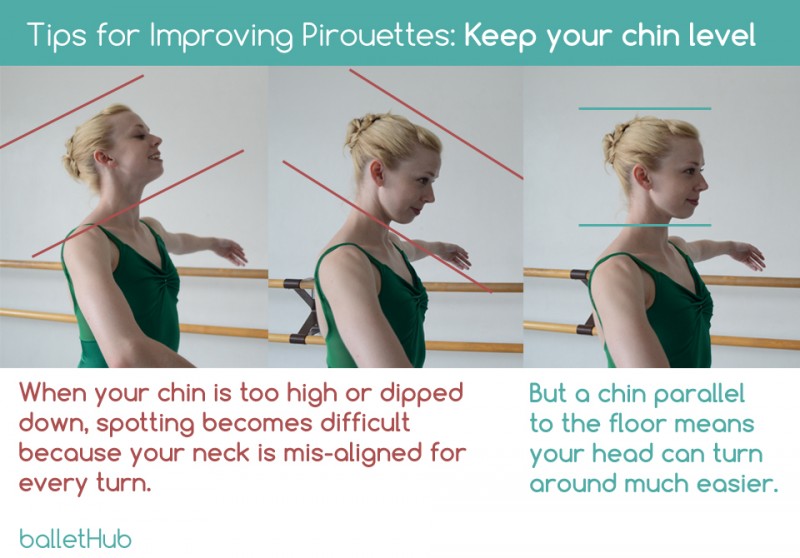A pirouette, no matter the type, only requires one preparation. Its common for some dancers to do the steps, leading into the preparation, then do a double bounce, or lifting a back foot into a smaller (or larger) fourth position before releveing and turning. This is common in, for example, a well-known preparation of “Tombe…
Stand facing the mirror in retiré with your arms hanging to the side. Now, turn 90 degrees to the side, and take your retiré position again, but turn and look in the mirror. You should notice that you’re flat in both positions, much like a spinning coin on a table. This is the idea you…
A pirouette in classical ballet will often not change positions during the turn, and if it does, its a change that looks purposefully done. (like from a front attitude, into passe, into a back attitude for example). But what you want to avoid is having different positions of your body throughout the turn and each…
No matter the type of pirouette, you should always try to get to your turning position in one count. The sooner you get to the proper position, the less chance the movement will throw you off your leg as you’re turning around. This is one of the best tips for improving pirouettes!
Two of the important ingredients for a pirouette are balance and preparation. But its important to have these two at the same time for consistent pirouettes. In your preparation, try to already be on balance and maintain it as you plié for the preparation. It may seem obvious, but some dancers disconnect the two, the…
Sometimes advanced students or professionals get caught up in doing a certain number of pirouettes, even when they’re struggling with them. If you can usually do three or four pirouettes but keep falling out of them… don’t keep practicing three or four pirouettes! Dial it back a little and try a double. Or even a…
Its a common mistake to try to whip your arms around, or to focus so intently on them that they seem to make up 90% of your pirouette. It should be the exact opposite. Try instead to think of your whole body, equally, making the pirouette position. If anything, you want to focus more strength…
Thinking of keeping your chin level will translate to a better aligned head and neck, which makes your spot smoother and pirouettes easier. Your head and neck play a big role in allowing you to to turn and spot. In order for this to be a fluid and efficient movement (that is also easier to…
Sometimes a dancer’s neck, in an effort to turn more, sticks out forward, out of alignment with the spine. Having your neck forward makes it harder for the essential mechanism of a turn to work… your spot! Take a look in the mirror and make sure your neck is straight and inline with your spine….
Dancers who often come off releve, but appear to be mostly aligned, may need to strengthen their ankles and legs. If releving more than a couple seconds really tires out your calf muscles quickly, you need to try some therapy band exercises to improve the strength in your ankles and calves. A great exercise is…



